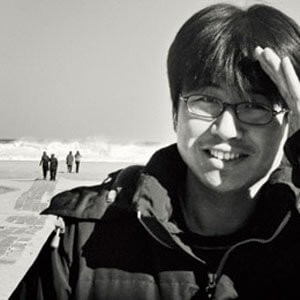Born in Seoul, Korea in 1975
2002 Bachelor Degree in photography, Sangmyung University, Seoul, Korea
Lives and Works in Seoul, Korea
When Vogue Korea asked Kim Kyoungsoo, a renowned fashion photographer to realize a series of fashion portraits that would (re-actualize) the traditionnal Korean costum (Hanbok), he also decided to realize his series Full Moon Story. His models are elegantly staged, wearing somptuous Hanbok, with their haircuts and make-up done perfectly. There is a serenity, poetry and softness which emanates from the pictures that astonishes and instantly puts the viewer in a contemplative state of mind.
"During the National traditionnal festivities called 'Chuseok', many Korean people used to wear the hanbok. I wanted to show this typical ambiance with both a lyric and modern touch. I wanted a neutral stage; only shadows and reflections mattered to me: Colours, faces and models were enhanced by cold and light tones creating an almost surreal feeling."
Source: www.galerieparisbeijing.com
